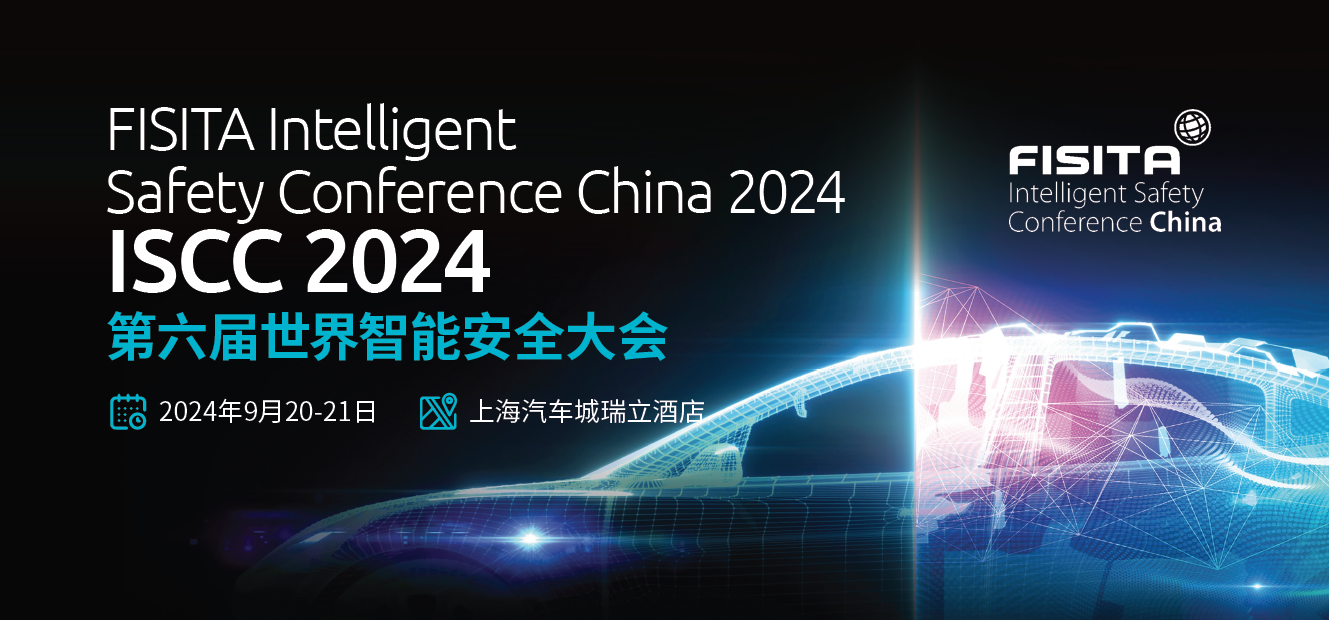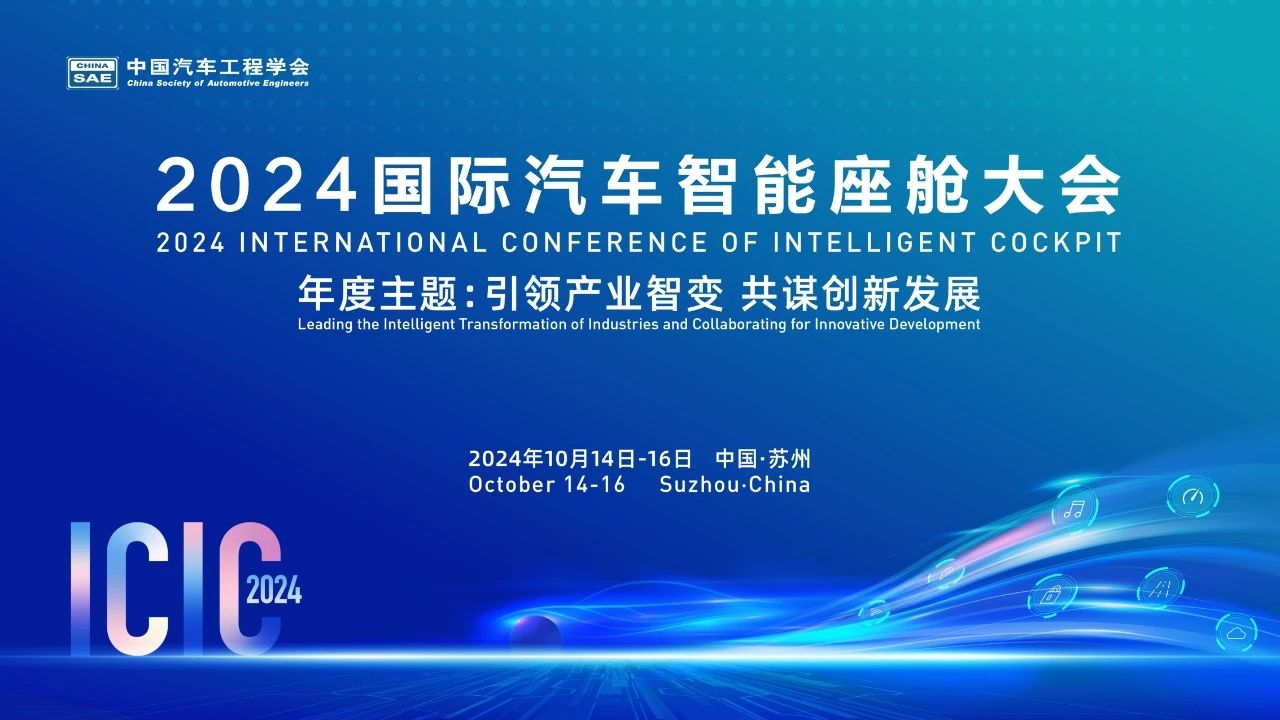

|
The journal Automotive Innovation is sponsored by China SAE, published through Springer Nature, distributed around the world, it reflects the top-level research and technological advance of automotive engineering.
Automotive Innovation newsletter in July includes the following contents: 1. Article Recommendation——Three papers on Autonomous Vehicles 2. China SAE News: · Get Ready for ISCC 2024: Final Agenda Revealed and Registration Now Open! |

   
|
Research on Dual-Clutch Intelligent Vehicle Infrastructure Cooperative Control Based on System Delay Prediction of Two-Lane Highway On-Ramp Merging Area
Yangyang Wang, Tianyi Wang r |
||
| The highway on-ramp merging area is a common bottleneck prone to traffic congestion and accidents. With the current trajectory and advancements in automotive technology, intelligent vehicle infrastructure cooperative control based on connected and automated vehicles (CAVs) is a fundamental solution to this problem. While much existing research focuses solely on ramp merging control in single-lane highway scenarios, there is more than one main lane in the actual highway environment. Thus, this paper proposes a dual-clutch longitudinal-lateral cooperative planning model, inspired by the principle of dual-clutch transmission, to address this gap. Besides, considering the impact of communication delay on control effects within the internet of vehicles, the paper proposes a system delay prediction model, which integrates the adaptive Kalman filter algorithm, the elitist non-dominated sorting genetic algorithm based on imitation learning, and the radial basis function neural network. The delay predicted dual-clutch on-ramp merging control model (DPDM) applied to two-lane highways for CAVs makes up of these two models above. Then, the performance of the DPDM is analyzed under different traffic densities on two-lane highways through simulation. The findings underscore the DPDM's pronounced comprehensive advantages in enhancing group vehicle safety, expediting and stabilizing merging processes, optimizing traffic flow speed, and economizing fuel consumption. | |||
|
Keywords: Dual-clutch cooperative planning, On-ramp merging control, System delay prediction, Connected and automated vehicle, Multi-objective optimization, Radial basis function neural network Wang, Y., Wang, T.: Research on Dual-Clutch Intelligent Vehicle Infrastructure Cooperative Control Based on System Delay Prediction of Two-Lane Highway On-Ramp Merging Area. Automot. Innov. (2024). |
|||
| Full Paper Reading>> | |||
   
|
Adaptive Gearshift Control for Dual Clutch Transmissions Based on Hybrid Physical and Data Driven Modeling Yonggang Liu, Yihua Liao, Jingchen Zhang, Jing Wei, Zheng Chen, Yi Zhang |
||
| Gearshift control poses significant influence on smoothness and dynamics of vehicles, especially for vehicles equipped with dual clutch transmissions (DCT). However, classical strategies are difficult to account for complex transient variations of the clutch friction coefficient during gear shifting. To cope with this challenge, this study proposes an adaptive gearshift control algorithm based on physical and data-driven modeling for regulation of the clutch friction coefficient. A closed-loop strategy is proposed for the speed control in the gearshift process of DCT vehicles. The reference speeds of clutch and engine are determined via online invocation of the pseudo-spectrum method. Meanwhile, an adaptive sliding mode controller based on the fused physical and data-driven hybrid model is designed to control the clutch oil pressure in the torque phase, thereby enabling precise tracking of the reference speed of the clutch. Then, an efficient engine controller is designed based on sliding mode control to regulate the throttle opening for following the engine reference speed in the torque phase. The simulation and experimental results manifest that the proposed adaptive control method maintains satisfactory shift quality with high adaptive capability and strong robustness under time-varying throttle pedal opening. | |||
|
Keywords: Dual clutch transmissions, Gearshift, Model-data hybrid driven control, Adaptive control
Liu, Y., Liao, Y., Zhang, J. et al.: Adaptive Gearshift Control for Dual Clutch Transmissions Based on Hybrid Physical and Data Driven Modeling. Automot. Innov. 7, 529–543 (2024). |
|||
| Full Paper Reading>> | |||
   
|
UFC3: UAV-Aided Fog Computing Based Congestion Control Strategy for Emergency Message Dissemination in 5G Internet of Vehicles
Atefeh Hemmati, Mani Zarei |
||
| Advanced research in 5G-enabled vehicular technologies has made the Internet of Vehicles (IoV) a promising research area in intelligent transportation systems (ITS). The high vehicular mobility causes frequent network topology changes, leading to unreliable emergency alert messaging (EAM) in real-time IoV applications. Due to the high volume of data propagation in such networks with limited bandwidth resources, topological dynamics can cause data congestion and data loss, which is not tolerable for delay-sensitive emergency messages (EMs). Unmanned Ariel vehicles (UAVs) as dynamic infrastructures can provide customized EAM services for IoVs. This paper proposes UFC3, a UAV-aided Fog Computing Congestion Control strategy for EM dissemination in 5G IoV. This study provides a practical method for EAM by reducing burst EM traffic to guarantee reliable messaging communication between an abnormal vehicle (AV) and the fog server (FS). In UFC3, various nodes capable of Wave protocol were considered as basic vehicles or 5G-enabled nodes regarded as intelligent vehicles or UAVs, and the authors propose a traffic-aware forward/backward link EAM strategy to handle any EM and the corresponding response between the AV and FS. Next, this paper suggests a mathematical analysis for EM propagation speed (EMPS) and propose closed-form EMPS equations for various traffic-aware forward/backward link EAM scenarios. Using OMNET + + along with Veins and INET frameworks, the authors simulate UFC3 and compare it with previously published works regarding communication overhead, throughput, packet delivery ratio, average delay, packet loss ratio, channel utilization, and energy consumption. | |||
|
Keywords: Congestion control, Emergency messages, Internet of vehicles (IoV), Unmanned aerial vehicles (UAVs) Hemmati, A., Zarei, M.: UFC3: UAV-Aided Fog Computing Based Congestion Control Strategy for Emergency Message Dissemination in 5G Internet of Vehicles. Automot. Innov. 7, 456–472 (2024). |
|||
| Full Paper Reading>> | |||

| Get Ready for ISCC 2024: Final Agenda Revealed and Registration Now Open! | |||
 The 2024 FISITA Intelligent Safety Conference China (ISCC 2024) will take place on September 20 – 21 in Shanghai, China. The FISITA Intelligent Safety Conference China will deliver a high-quality, national and international speaker line-up, which will consider and discuss the important topics of the Strategy, Technology Roadmap, and Key Technologies for Autonomous Driving Safety, making this one of the important, must-attend events of 2024. The topics covered will be:
For more information about the Agenda of ISCC 2024, please click here. |
|||
| Calling For Papers: Feature Topic on Intelligent Transportation Systems | |||
 Automotive Innovation is calling for papers for the Feature Topic on Intelligent Transportation Systems. Welcome topics include, but are not strictly limited to, the following:
Submission deadline: Oct. 31st, 2024 For more detailed information please click here . |
|||
| Early Bird Registration Now Open for ICIC 2024: Unveiling the Conference Highlights | |||
 The "2024 International Conference of Intelligent Cockpit (ICIC 2024)" organized by China SAE will be held in Suzhou from Oct 14-16, 2024. Themed "Leading the Intelligent Transformation of Industries and Collaborating for Innovative Development," the conference aims to identify future directions, build collaboration platforms, and drive technological innovation and industrial upgrading. For more detailed information please click here . |
|||

|
Automotive Innovation Sponsored by China SAE and published globally via Springer Nature, Automotive Innovation aims to be a world-class journal that provides abundant sources of innovative findings for automotive engineers and scientists. The journal is published quarterly, ensuring high-quality papers satisfying international standards. With the editorial board consisting of world-renowned experts, it has attracted readers from 72 countries and regions. The highest download of a single article wins more than 32,000. The journal is indexed in Ei Compendex, ESCI, and Scopus (IF2023=4.8; CiteScore2023=8.5). The journal provides a forum for the research of principles, methodologies, designs, theoretical background, and cutting-edge technologies in connection with the development of vehicle and mobility. The main topics cover: energy-saving, electrification, intelligent and connected, safety, and emerging vehicle technologies. Editors-in-Chief Jun Li, Academician of CAE, Honorary President of China SAE, Professor of Tsinghua University Frank Zhao, Honorary Lifetime President of FISITA, Director of Tsinghua Automotive Strategy Research Institute, Professor of Tsinghua University Executive Associate Editor-in-Chief Prof. Xinjie Zhang, Professor of Jilin University |
||
|
Paper submission and browse www.ChinaSAEJournal.com.cn www.springer.com/42154 Contacts: Ms. Dong Li Tel: +86-10 5092-3792 Email: lidong@sae-china.org 
|

|
|
|
Sponsored by |
Published by
|
|